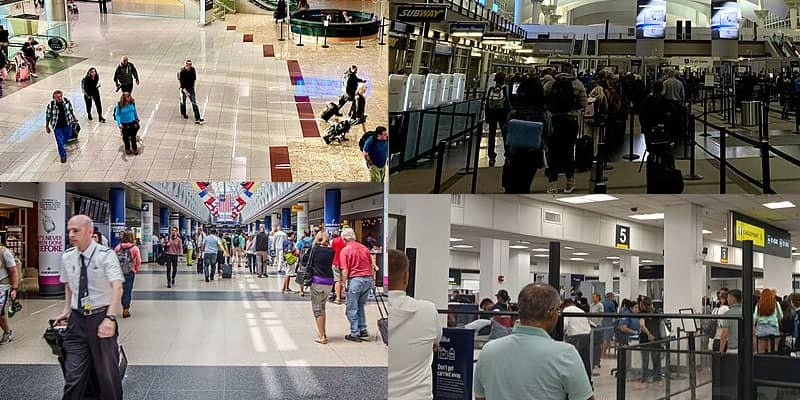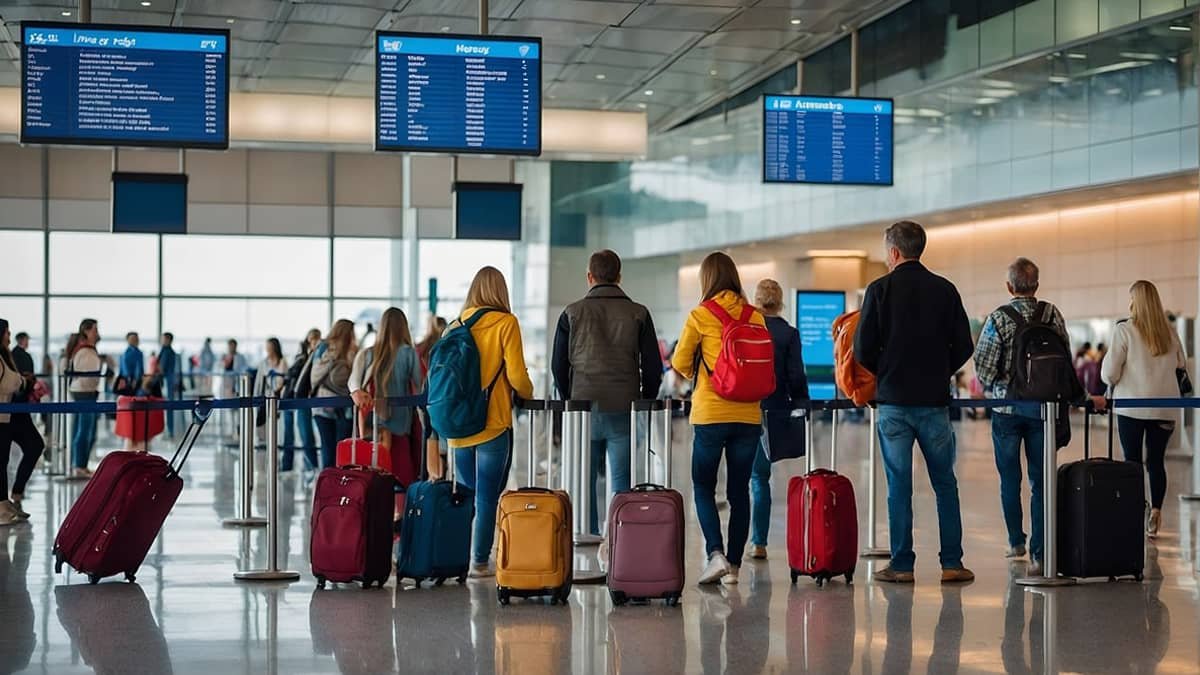List of Top 10 Busiest Airports in Canada

Canada’s air travel network is anchored by a handful of major gateways that together handle the vast majority of domestic, transborder, and international passenger traffic. In 2023, Canada welcomed over 150 million air travellers, a 26.8% increase over 2022 as the industry rebounded from the pandemic slowdown.
Yet even within this substantial volume, the top ten busiest airports concentrate nearly three-quarters of all passengers, reflecting their crucial role in connecting Canada to the world. Below is a deep dive into the Top 10 Busiest Airports in Canada—ranked by total passenger traffic in 2023 (figures in millions)—highlighting what makes each facility a vital piece of the nation’s transportation infrastructure, along with their primary addresses.
1. Toronto Pearson International Airport (YYZ)
- Passengers (2023): 43.72 million
- Serves: Greater Toronto Area, Ontario
- Address: 6301 Silver Dart Drive, Mississauga, ON L5P 1B2, Canada
- Overview: As Canada’s largest airport and one of the world’s major aviation hubs, Pearson handled nearly 29% of all Canadian air travellers in 2023. Its two large terminals host more than 80 airlines offering nonstop flights to over 180 destinations globally. Pearson’s extensive cargo facilities also make it the country’s top air freight gateway.
2. Vancouver International Airport (YVR)
- Passengers (2023): 24.26 million
- Serves: Metro Vancouver, British Columbia
- Address: 3211 Grant McConachie Way, Richmond, BC V7B 0A4, Canada
- Overview: YVR’s west-coast location positions it as Canada’s premier gateway to Asia and Oceania. With consistent double-digit growth over the past decade, the airport features a state-of-the-art international terminal, robust cargo operations, and is repeatedly recognized for passenger satisfaction.
3. Montréal–Trudeau International Airport (YUL)
- Passengers (2023): 20.38 million
- Serves: Greater Montreal, Quebec
- Address: 975 Boulevard Roméo-Vachon Nord, Dorval, QC H4Y 1H1, Canada
- Overview: Trudeau has seen significant expansion of its long-haul network, including direct links to Europe, the Middle East, and Africa. A cultural hub, YUL blends modern art installations within its terminals and has invested heavily in sustainability, aiming for carbon neutrality in the coming decade.
Suggesed Read- The Top 10 Busiest Airports in the United States in 2024
4. Calgary International Airport (YYC)
- Passengers (2023): 18.03 million
- Serves: Calgary Metropolitan Region, Alberta
- Address: 2000 Airport Road NE, Calgary, AB T2E 6W5, Canada
- Overview: YYC’s strategic position makes it the busiest airport in Alberta and the fourth-busiest in the country. It supports Canada’s energy sector and tourism to the nearby Rocky Mountains, offering extensive domestic and international connections, including to the U.S., Europe, and Asia.
5. Edmonton International Airport (YEG)
- Passengers (2023): 7.22 million
- Serves: Edmonton Metropolitan Region, Alberta
- Address: 1000 Airport Road, Leduc County, AB T9E 0V3, Canada
- Overview: As Alberta’s second-busiest airport, YEG has grown rapidly thanks to increased low-cost carrier services and expanded transborder routes. Its modern terminal, opened in 2013, provides room for continued growth in both passenger and cargo traffic.
6. Winnipeg James Armstrong Richardson International Airport (YWG)
- Passengers (2023): 4.09 million
- Serves: Winnipeg Metropolitan Region, Manitoba
- Address: 2000 Wellington Avenue, Winnipeg, MB R3H 1C2, Canada
- Overview: YWG serves as a vital hub for both cargo and regional connectivity across central Canada. After pandemic lows, passenger numbers rebounded to their highest level since 2019, driven by robust domestic travel.

7. Ottawa Macdonald–Cartier International Airport (YOW)
- Passengers (2023): 3.99 million
- Serves: National Capital Region, Ontario
- Address: 1000 Airport Parkway, Ottawa, ON K1B 3Y7, Canada
- Overview: YOW is Canada’s seventh-busiest airport, acting as the principal gateway to the nation’s capital. Its mix of government, business, and leisure travel creates unique peak patterns, and recent terminal upgrades aim to enhance both capacity and passenger experience.
Suggested Read- List of Top 10 Busiest Airports in the United Kingdom
8. Halifax Stanfield International Airport (YHZ)
- Passengers (2023): 3.58 million
- Serves: Halifax and Atlantic Canada, Nova Scotia
- Address: 1 Bell Boulevard, Enfield, NS B2T 1K2, Canada
- Overview: As the busiest airport in Atlantic Canada, YHZ is a critical link for domestic and international travellers. In 2023 it saw a 15% year-over-year increase, driven by returning tourism and a growth in transatlantic services, including new seasonal flights to Europe.
9. Billy Bishop Toronto City Airport (YTZ)
- Passengers (2023): 2.40 million
- Serves: Toronto Islands, Ontario
- Address: 1 Eireann Quay, Toronto, ON M5V 1A1, Canada
- Overview: Known locally as “Toronto Island Airport,” YTZ caters mainly to regional and transborder flights. Its downtown location attracts business travellers seeking quick connections to New York, Chicago, and Boston, with numerous short-haul routes operated by Porter Airlines and Air Canada Express.
10. Kelowna International Airport (YLW)
- Passengers (2023): 2.03 million
- Serves: Kelowna and the Okanagan Valley, British Columbia
- Address: 5530 Airport Way, Kelowna, BC V1V 1A4, Canada
- Overview: Rounding out the top ten, YLW has established itself as the primary air gateway to British Columbia’s interior wine-country and resort destinations. A surge in leisure travel has driven passenger traffic above 2 million, and continued expansion is planned to meet rising demand.
Looking Ahead
The top ten airports in 2023 collectively handled 146.0 million passengers—over 97% of all Canadian air traffic. As air travel continues to grow, these facilities are investing in terminal expansions, sustainability initiatives, and enhanced route networks to serve Canada’s evolving needs. From the global hubs of Toronto and Vancouver to the regional connectors in Halifax and Kelowna, these ten airports will remain the engines of Canada’s economic and cultural exchange for years to come.
Image Credits- Toronto Pearson Airport








